Museums & Institutions
After Three Years, London’s Revamped Courtauld Gallery Has Reopened to the Public With Rave Reviews—See the New Displays Here
See images from the long-awaited renovation and rehang.

See images from the long-awaited renovation and rehang.

Amah-Rose Abrams

In the most hotly anticipated opening in London in decades, London’s newly refurbished Courtauld Gallery at Somerset House will reopen after three years today, giving the public access to its incomparable Impressionist and medieval collections with some added contemporary touches.
The collection ranges from the Middle Ages to the 20th century and includes works by Sandro Botticelli, Claude Monet, Edouard Manet, Pierre-Auguste Renoir, Oskar Kokoschka, and now a new large-scale work by Cecily Brown, which sits at the top of a staircase that has been Instagrammed almost as much as the art.
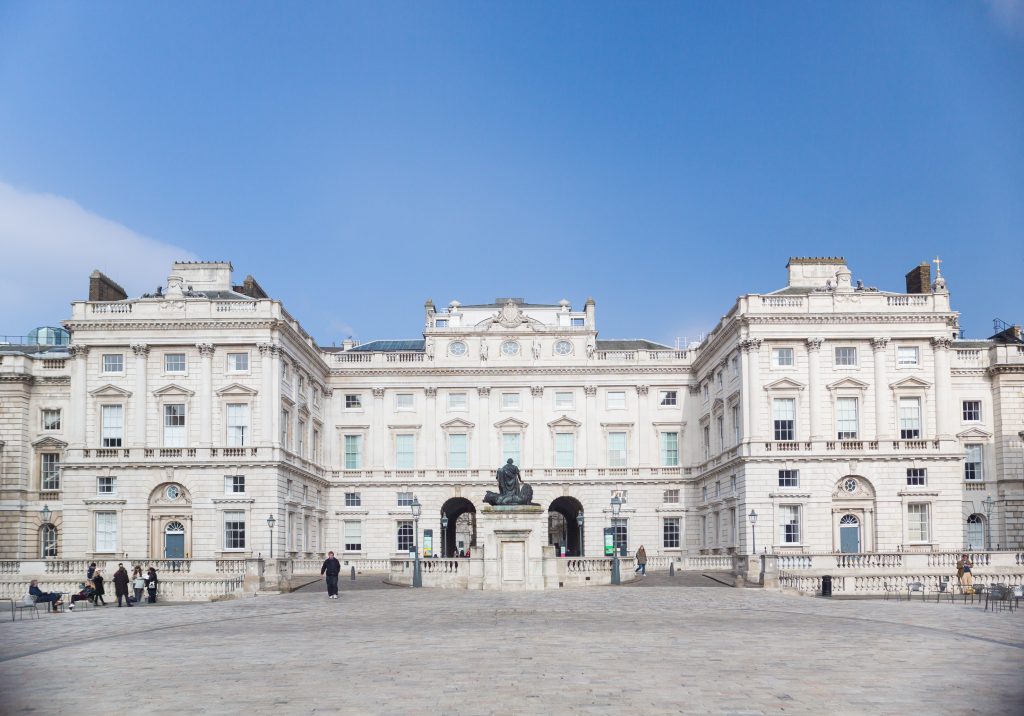
The Courtauld Gallery. Photo Benedict Johnson
The revamp was a collaboration between Witherford Watson Mann architects and gallery designers Nissen Richards intended to better display the masterpieces in the collection.
“We are so excited to welcome visitors back,” said Courtauld director Deborah Swallow in a statement. “The transformation has been incredible, and the masterpieces in our collection now shine brighter than ever before.”
The funds for the £21 million project ($28.4 million) came from the National Lottery Heritage Fund (£11 million) and from philanthropists Leonard and Lady Blavatnik and the Blavatnik Family Foundation (£10 million), whose name you might recognize from the Tate Modern Blavatnik Building.
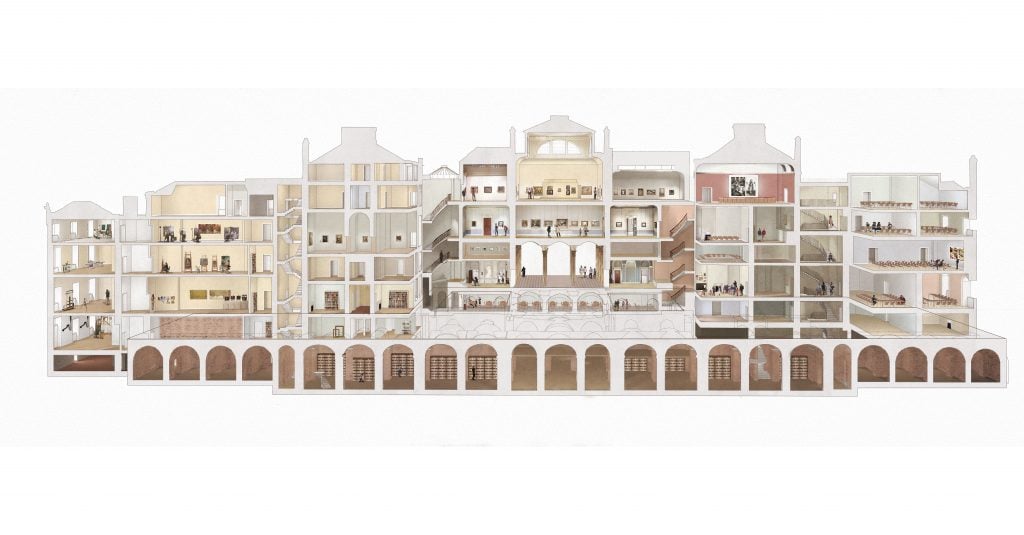
Render of The Courtauld Gallery. Courtesy The Courtauld Gallery.
New spaces have been created for temporary exhibitions and research facilities. it is also the home of the internationally renowned Courtauld Institute and has a school-age educational program.
“The new Courtauld Gallery allows us to showcase the range and richness of the collection as never before, as well as to shine a light on areas of the Courtauld’s work that are less well known. Our new spaces and facilities will also better support our acclaimed temporary exhibitions, as well as welcome schools, students and the wider community,” said Lord Browne of Madingley, chairman of the Courtauld, in a statement.

The Courtauld Gallery. Photo © Jim Winslet
A new gallery space on the first floor displays the Courtauld’s collection of work from Middle East, Italy, and northern Europe from the medieval and Early Renaissance periods.
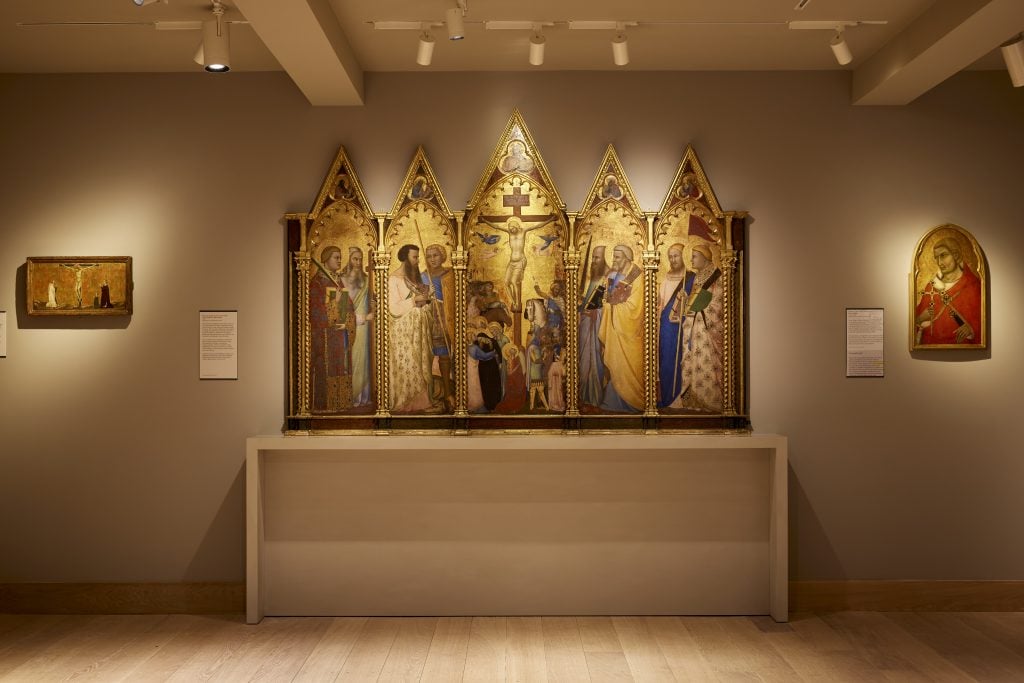
The Courtauld Gallery. Photo David Levene.
The Blavatnik Fine Rooms on the second floor house the new hang of Renaissance works up to the 18th century, including the institution’s collection of work by Peter Paul Rubens and Botticelli’s The Trinity with Saints, which has just been newly conserved.
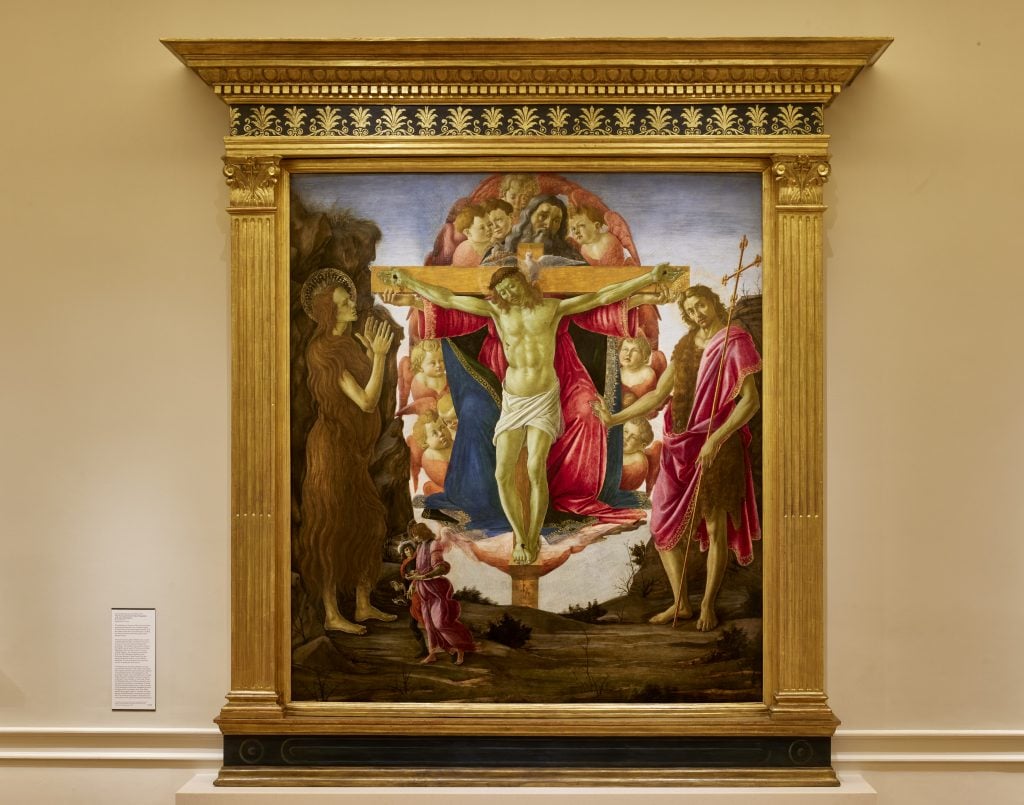
The Holy Trinity with Saints Mary Magdalen and John the Baptist (c.1491-94). Photo David Levene.
There is also now a dedicated space for the collection of work by the currently fashionable Bloomsbury Group, with paintings from Vanessa Bell and Duncan Grant and examples of drawing, radical furniture design, ceramics, and textiles.
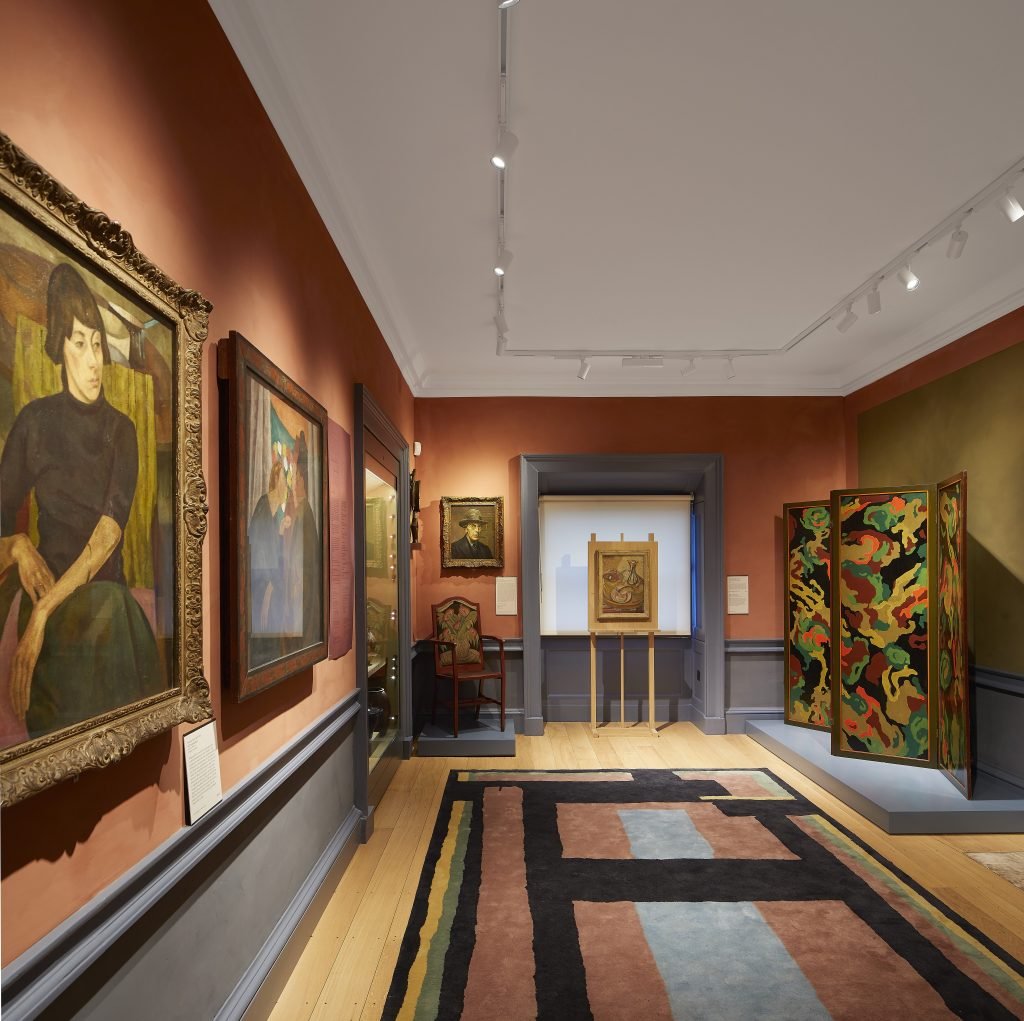
The Bloomsbury Room at The Courtauld Gallery. Photo © Hufton+Crow
The re-opening means that London once again has access to the array of Impressionist and Post-Impressionist works in the institution’s collection, including Manet’s A Bar at the Folies-Bergère (1882), Cézanne’s The Card Players (1839-1906), and Van Gogh’s Self-Portrait with Bandaged Ear (1889), all housed in the LVMH Great Room.
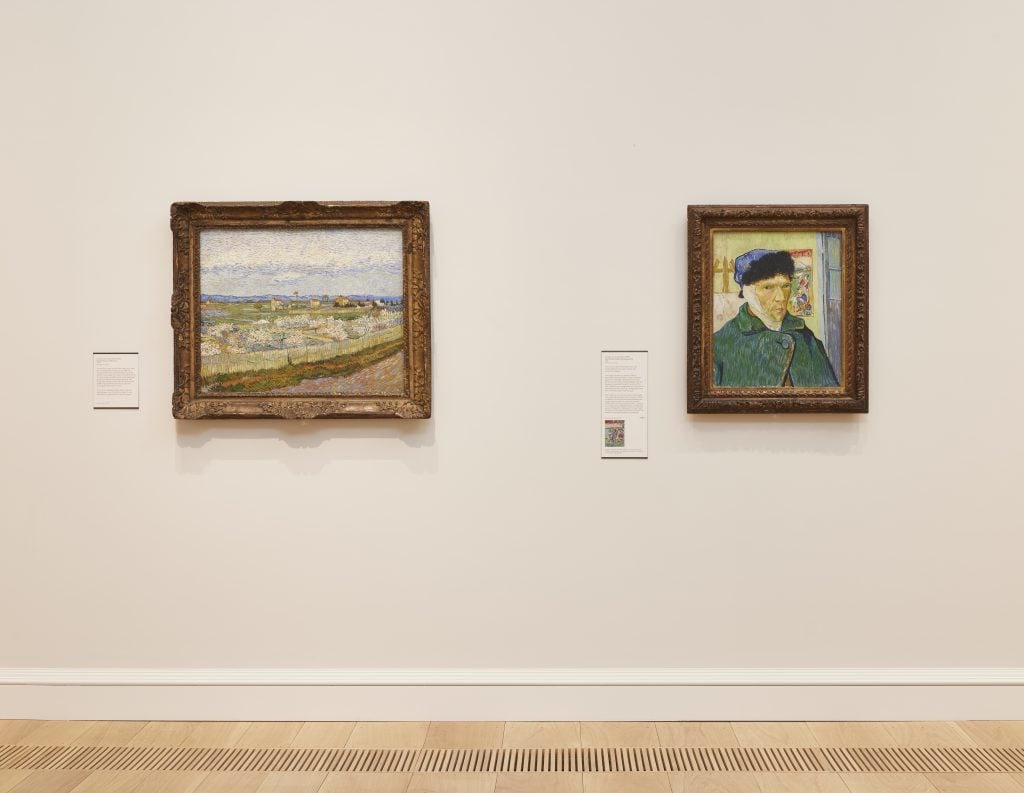
The Courtauld Gallery. Photo David Levene.
There is also a new installation of an eight-meter work, The Myth of Prometheus (1950), by Austrian Expressionist Oskar Kokoschka, which is displayed with photography by Lee Miller.
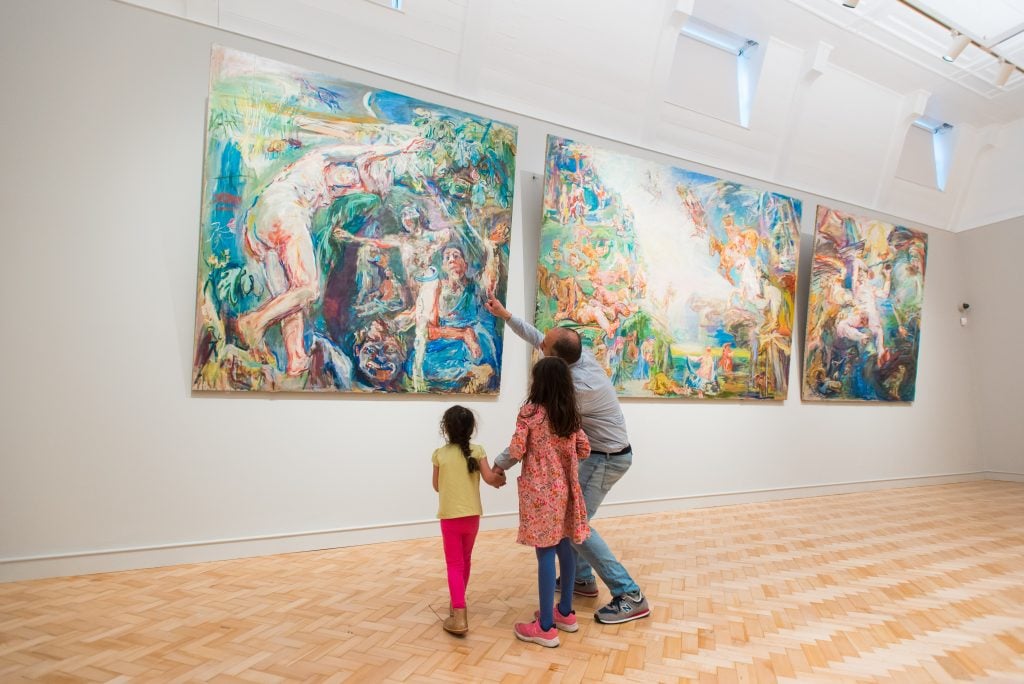
The Myth of Prometheus 1950 Oskar Kokoschka (1886-1980) at the Courtauld Gallery. Photo © Jim Winslet.
Two new galleries on the top floor of Somerset House will be dedicated to temporary exhibitions, including the current “Modern Drawings: The Karshan Gift” (through January 22), which includes works by Cy Twombly, Wassily Kandinsky, Paul Klee, Georg Baselitz, and other American and European masters.
“The Courtauld was founded in 1932 on the belief that everyone should have the opportunity to engage with art,” said Swallow. “With improved visitor facilities and greater accessibility, we’re also looking forward to welcoming people who might not have visited the Courtauld before—as well as being once again able to use the gallery to teach our wonderful art history, curation and conservation students.”